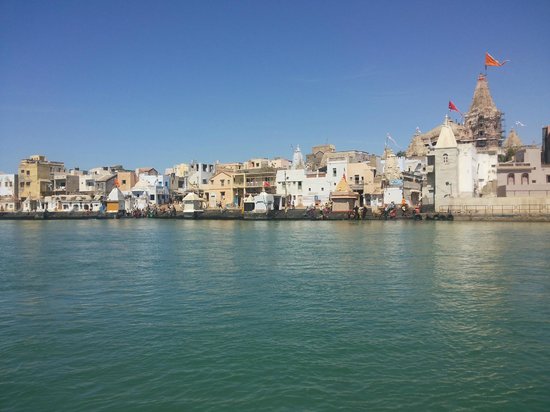When we speak of timeless cities that blend history, faith, and legend, Dwarka holds a place of honor. Known as the kingdom of Lord Krishna, Dwarka is one of the four holy Char Dham pilgrimage sites of India. Situated along the Arabian Sea in Gujarat, it is not just a destination for worship but a living storybook where mythology, devotion, and culture converge.
To walk in Dwarka is to walk through history that stretches back thousands of years. From temple spires that touch the sky to the waves of the sea that whisper ancient tales, every corner of Dwarka carries a fragrance of divinity. In this you will completely engage with dwarka travel guide so lets go.
Dwarka in Mythology
When we talk about Dwarka, we are not simply speaking of a city; we are entering into a legend that has lived for thousands of years. Dwarka in mythology is more than geography—it is a tale of devotion, love, politics, and the eternal play of Lord Krishna. The stories connected with this city are woven into the heart of Indian culture, making it one of the most fascinating places in the spiritual map of the world.
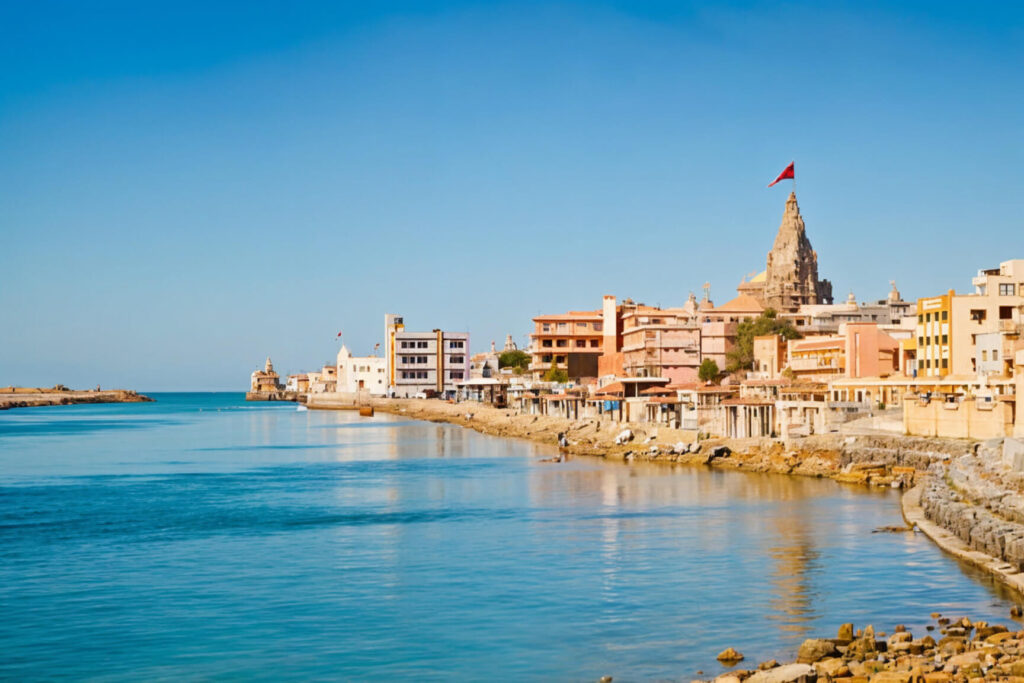
Krishna’s Journey from Mathura to Dwarka
The mythology of Dwarka begins with Krishna’s early life in Mathura. Born in prison to Devaki and Vasudeva, Krishna’s childhood was marked by divine miracles and the defeat of tyrants. Yet, as He grew, the safety of His people became His foremost concern.
Mathura, though sacred, was under constant threat from Jarasandha, the powerful king of Magadha. Jarasandha’s repeated attacks placed the Yadava clan in grave danger. To protect His people, Krishna decided to move them to a safer place. It was then that the idea of Dwarka emerged—an invincible city built by the sea, far away from the reach of enemies.
The Golden City
Mythology describes Dwarka as a city unlike any other. Constructed with the help of the divine architect Vishwakarma, it was said to shine like gold under the sun. The palaces were studded with gems, the streets were wide, and gardens bloomed with fragrant flowers. The sea surrounded the city on all sides, giving it both beauty and protection.
Krishna established Dwarka as the capital of the Yadavas. It became not just a place of safety but also a center of culture, trade, and spirituality. In many ways, Dwarka symbolized Krishna’s role as a leader and protector, balancing His divine duties with His responsibilities as a king.

Dwarka as the Stage of Divine Stories
The mythology of Dwarka is filled with countless episodes that shaped Krishna’s life and legacy. Each story adds a layer of meaning to the city’s spiritual aura.
1. Krishna and Rukmini
Dwarka is where Krishna brought Rukmini after their legendary union. According to the story, Rukmini, the princess of Vidarbha, was set to be married against her will to Shishupala. She had already devoted her heart to Krishna and sent Him a message to rescue her. Krishna rode to her kingdom, lifted her onto His chariot, and brought her safely to Dwarka, where they were married. This story is often retold as the triumph of divine love and devotion over worldly constraints.
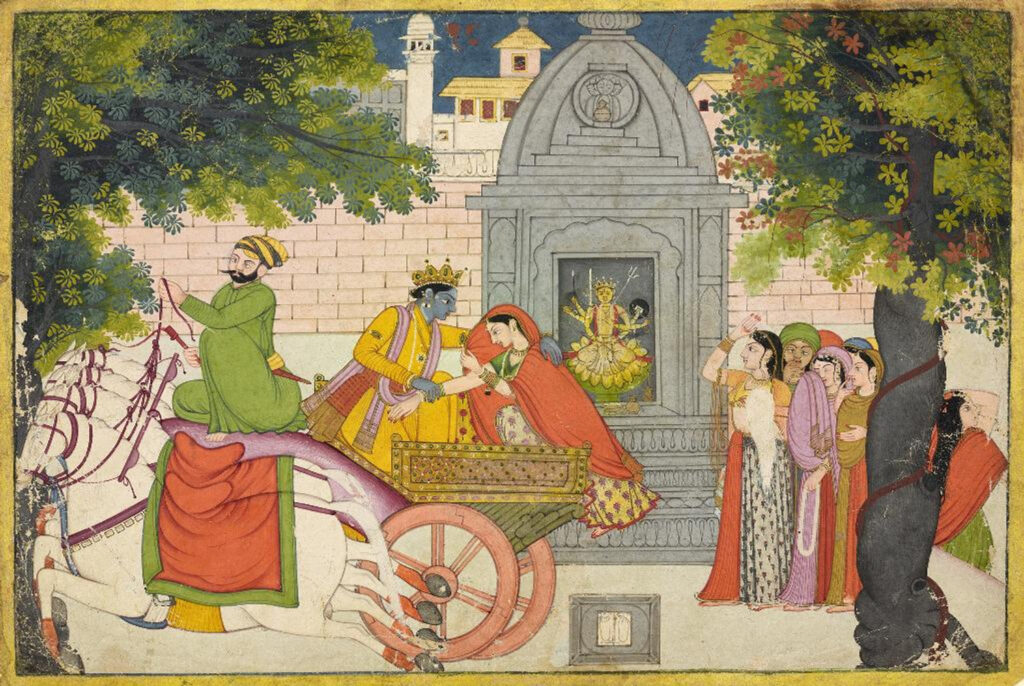
2. The Syamantaka Jewel
Another tale linked to Dwarka involves the mysterious Syamantaka jewel. When the jewel went missing, Krishna was wrongly accused of theft. To prove His innocence, He set out on a quest, facing dangerous battles and challenges. Eventually, He not only cleared His name but also brought peace back to His people. This story highlights Krishna’s role as upholder of truth and justice.

3. Krishna as a King
In Dwarka, Krishna ruled as a statesman and strategist. He guided the Yadavas with wisdom, making the city flourish in prosperity and harmony. Unlike His playful childhood days in Vrindavan, Dwarka represents Krishna in His mature role—a leader who balanced diplomacy, warfare, and devotion.
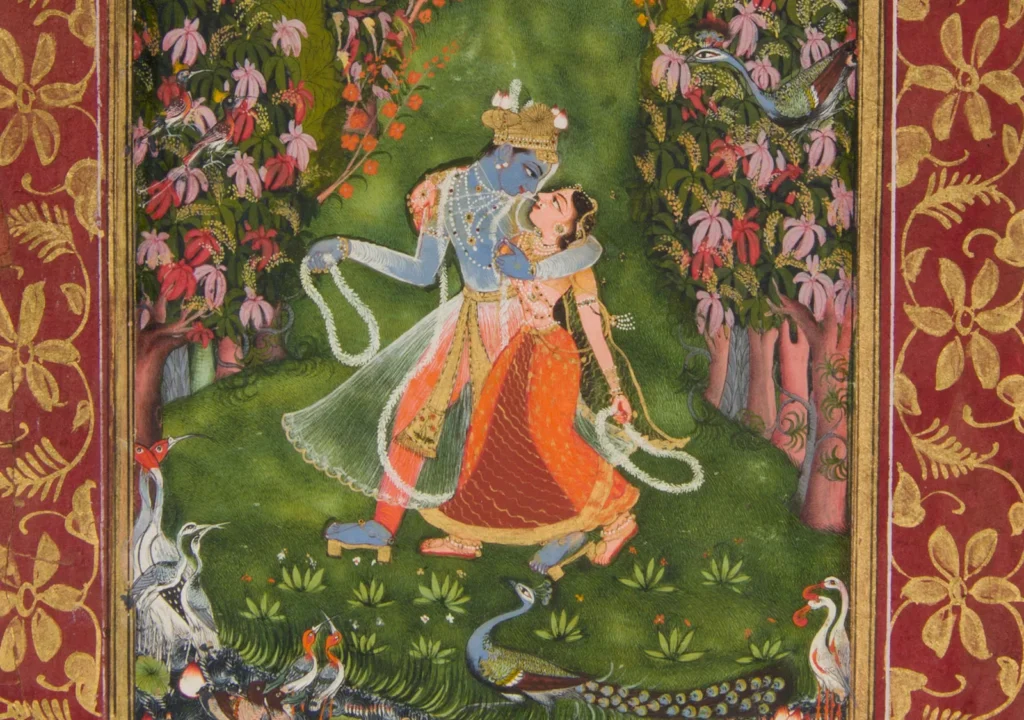
The Fall of Dwarka
Mythology also speaks of Dwarka’s eventual end. After the Kurukshetra war, the Yadavas were cursed by Gandhari, the mother of the Kauravas. The curse led to quarrels among Krishna’s own people, resulting in destruction and bloodshed.
Krishna, knowing the time of His departure had come, withdrew from worldly life. Soon after His exit, the sea engulfed Dwarka. The golden city that once dazzled the world disappeared under the waters, leaving behind only legends.
The submergence of Dwarka is often interpreted as a lesson in impermanence. Even the grandest cities and the greatest powers cannot escape the flow of time. What remains eternal is the spirit of dharma that Krishna embodied.

Symbolism of Dwarka in Mythology
Beyond its stories, Dwarka carries profound symbolic meaning in Hindu mythology.
- A Refuge for Devotees – Dwarka represents the safe haven Krishna created for His people, reminding us that divine protection is always near.
- The Balance of Duty and Love – In Mathura and Vrindavan, Krishna is remembered for His playful love. In Dwarka, He is remembered for His duty as king. The city reflects the balance between personal joys and responsibilities.
- The Illusion of Permanence – The submergence of Dwarka reminds humanity that worldly possessions, however grand, are temporary. Spiritual wisdom alone stands the test of time.
- A Divine Capital – Unlike earthly kingdoms, Dwarka was seen as a bridge between heaven and earth, ruled not by ambition but by dharma.
Dwarka in the Mahabharata
The great epic Mahabharata also sheds light on Dwarka. Krishna’s presence in Dwarka influenced the outcome of many events in the epic. It was from Dwarka that Krishna journeyed as an ambassador of peace to the Kaurava court before the war. It was also from Dwarka that He guided the Pandavas, shaping the destiny of the battle.
Dwarka, therefore, was not just Krishna’s kingdom but also a silent participant in the great cosmic drama of the Mahabharata. The city’s voice can be heard in every conversation, decision, and moment where Krishna played His role as guide and protector.
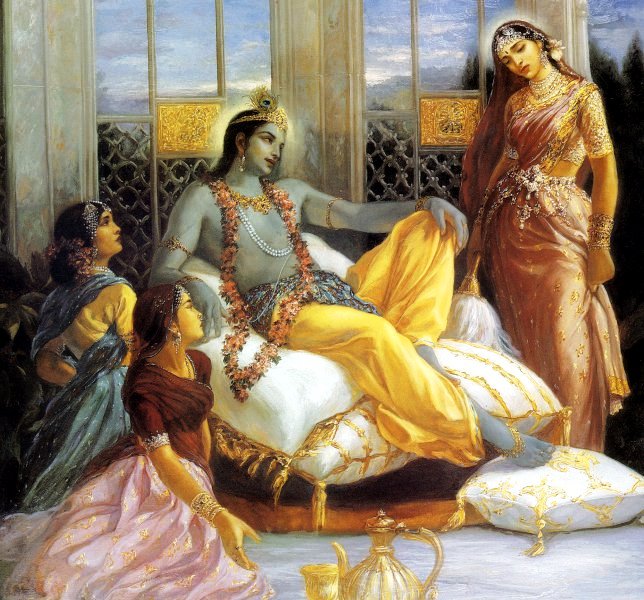
The Dwarkadhish Temple
The centerpiece of Dwarka is the grand Dwarkadhish Temple, also known as the Jagat Mandir, meaning Temple of the Lord of the Universe. Rising majestically on the banks of the Gomti River, it is the heart of the city’s spiritual life.
Architectural Highlights
- The temple is about 2,500 years old in its foundation, although much of its current structure belongs to the 15th and 16th centuries.
- The five-storied structure is supported by intricately carved pillars, each telling stories of devotion.
- The spire rises nearly 78 meters high and is topped with a large flag that flutters in the wind. This flag is changed five times a day, each time accompanied by rituals and chants.
- The temple has two main entrances: the Moksha Dwar (Door of Liberation) and the Swarga Dwar (Door of Heaven). Pilgrims enter through one and exit through the other, symbolizing the journey of the soul.
Spiritual Experience
Stepping inside the temple, one is greeted by the serene idol of Lord Krishna, worshiped as Dwarkadhish—the King of Dwarka. The atmosphere resonates with devotional songs, the fragrance of incense, and the sound of conches. For many visitors, the darshan feels like an intimate moment with the Lord Himself.

Other Temples of Dwarka
While the Dwarkadhish Temple dominates the skyline, the city is dotted with many other sacred shrines, each adding to its spiritual charm.
- Rukmini Devi Temple – Dedicated to Krishna’s consort, Rukmini, this temple lies slightly outside the main town. Its beautiful carvings and stories highlight the devotion of the queen of Dwarka.
- Nageshwar Jyotirlinga Temple – One of the twelve sacred Jyotirlingas of Lord Shiva, located a short distance from Dwarka. Pilgrims visit here to pay respects to both Krishna and Shiva in a single journey.
- Gomti Ghat Temples – Along the banks of the Gomti River, numerous small shrines and steps lead to the sacred waters where devotees take ritual baths before entering the main temple.
- Bet Dwarka – An island believed to be the original residence of Krishna and His family. Reaching here requires a short boat ride, and the island has several shrines and treasures of history.
Dwarka and the Sea
One of the most striking features of Dwarka is its location beside the Arabian Sea. The city seems to have an eternal conversation with the waves. According to legend, the sea swallowed the ancient golden city of Krishna, leaving behind mysteries that still fascinate divers and archaeologists.
Marine excavations near Dwarka have revealed structures under the water, sparking debates about whether these are remnants of the mythological city. For devotees, these discoveries are not mere archaeology but confirmation of the eternal truth of Krishna’s story.
The sea also adds to the spiritual aura of Dwarka. Pilgrims take dips at Gomti Ghat where the river meets the ocean, believing it washes away sins and prepares them for temple darshan. At sunset, the temple spire glows golden against the backdrop of the sea, creating a view that lingers in the heart forever.
Festivals in Dwarka
Dwarka is not just a place of worship but also a city that celebrates life through festivals.
Janmashtami
The most important celebration is Janmashtami, the birth anniversary of Lord Krishna. The temple and the city are decorated with flowers, lights, and colorful fabrics. Devotees gather in huge numbers to sing bhajans, perform dances, and re-enact episodes from Krishna’s life. At midnight, the moment believed to be Krishna’s birth, the temple bells ring, conches blow, and the idol is adorned in special attire, creating an atmosphere of ecstasy.
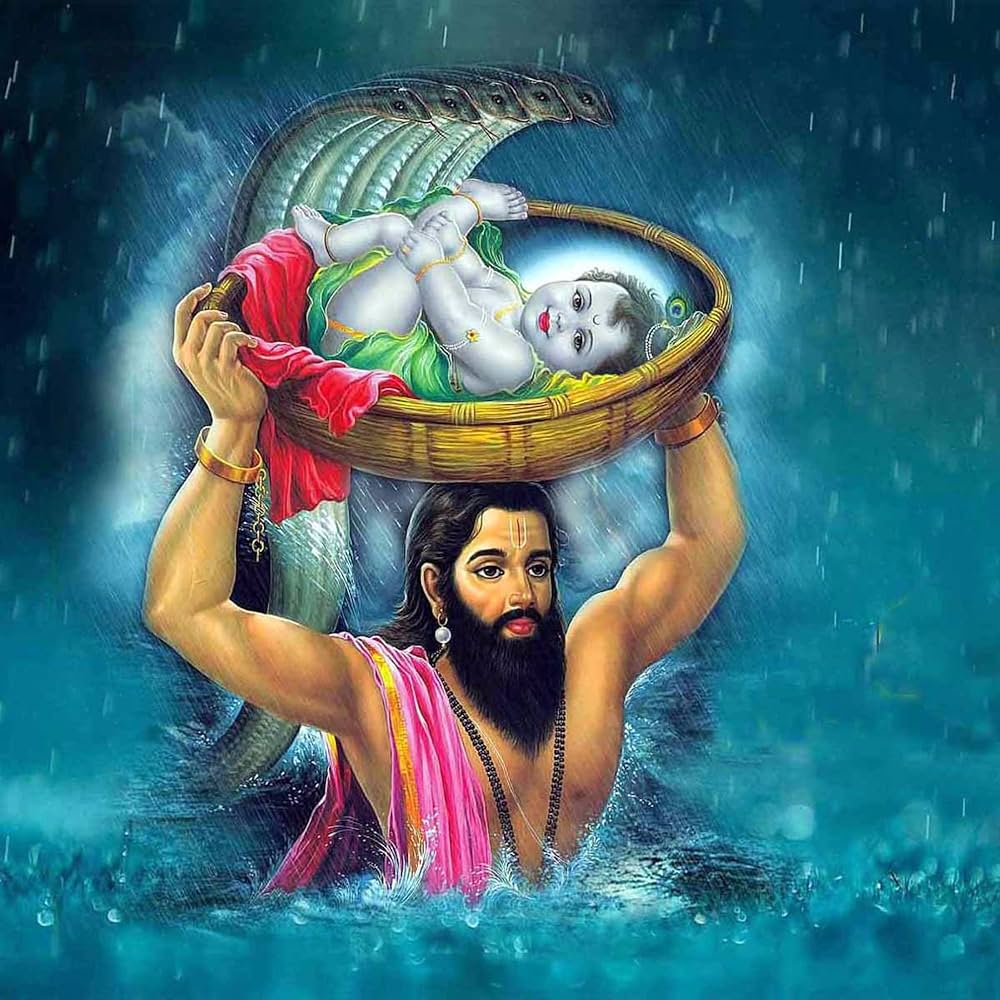
Rath Yatra
Another major celebration is the Rath Yatra of Dwarka, where Lord Krishna’s idol is placed on a beautifully decorated chariot and taken around the streets. Devotees pull the chariot with devotion, singing and dancing along the way.
Other Festivals
- Holi is celebrated with colors and joy, recalling Krishna’s playful nature.
- Diwali in Dwarka is marked by the lighting of lamps across the temple premises, giving the sea-facing city a glow of devotion.
Things to Do in Dwarka Beyond Temples
While temples form the soul of Dwarka, the city offers experiences that go beyond religious rituals.
- Explore Bet Dwarka – Take a boat ride to the island and explore ancient temples and folklore.
- Visit Dwarka Lighthouse – Climb up for panoramic views of the Arabian Sea and the temple spires.
- Check Marine Excavations – Learn about underwater remains of the ancient Dwarka city, a fascinating blend of faith and archaeology.
- Local Markets – Shop for seashell crafts, conch bangles, idols of Krishna, and traditional Gujarati fabrics.
- Taste Local Food – Enjoy khichdi, the temple prasad, and Gujarati thalis that reflect the simplicity and flavor of the region.

Dwarka as Part of Char Dham
Dwarka is one of the Char Dham pilgrimage sites, along with Badrinath, Puri, and Rameswaram. For Hindus, completing the Char Dham yatra is believed to cleanse the soul and open the path to liberation. Dwarka represents the western seat of this spiritual journey, making it an essential stop for seekers from across the country.
The Spiritual Lessons of Dwarka
Dwarka is not only about visiting temples or performing rituals. It is about learning from Krishna’s life and teachings. Here are some lessons the city continues to remind us:
- Dharma is eternal – Krishna ruled Dwarka with justice, showing that righteousness must guide every action.
- Balance is key – The city reflects Krishna’s ability to balance His roles as king, friend, guide, and divine being.
- Impermanence of life – The submergence of the golden city into the sea reminds us that worldly wealth and power are temporary.
- Faith unites – From fishermen to kings, everyone in Dwarka sees Krishna as their own, showing the inclusiveness of spirituality.
How to Reach Dwarka
Reaching Dwarka is a journey filled with both convenience and anticipation. As one of the most important pilgrimage destinations in India, the city is well connected by road, rail, and air. Pilgrims and travelers can choose the option that suits their comfort and schedule.
By Road
Dwarka is well connected to major cities of Gujarat through smooth highways. State transport buses and private luxury coaches regularly operate from Ahmedabad, Rajkot, Jamnagar, Porbandar, and Somnath. For those who prefer flexibility, hiring a taxi or driving down is also a good choice, as the scenic journey allows travelers to experience the rural charm of Gujarat along the way.
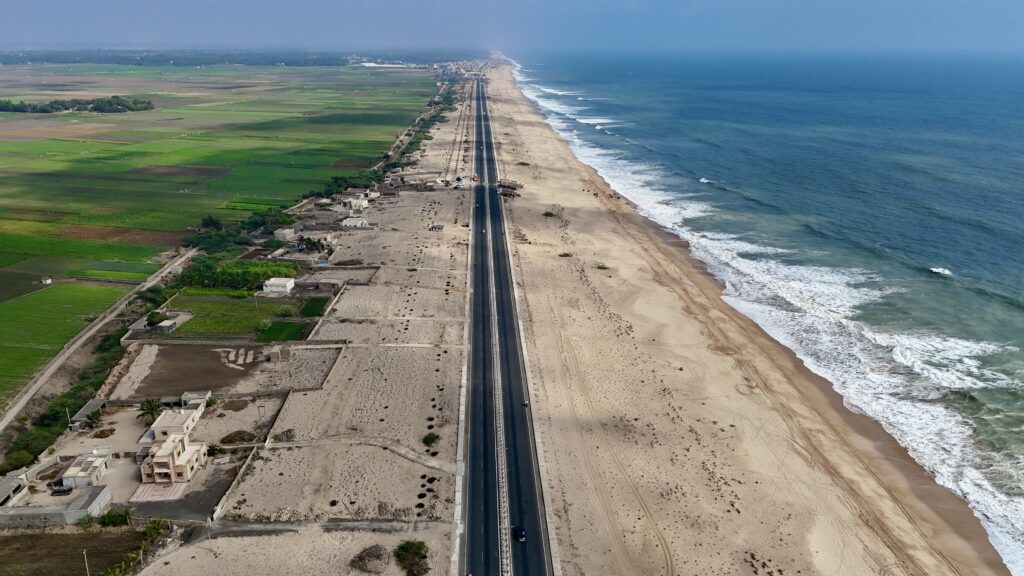
By Rail
Dwarka has its own railway station, which lies on the Ahmedabad–Okha route. Several express and superfast trains connect Dwarka to cities like Ahmedabad, Surat, Vadodara, and even long-distance destinations such as Mumbai and Delhi. Once you arrive at Dwarka railway station, local auto-rickshaws and taxis are easily available to take you to the temple and other sites in the city.
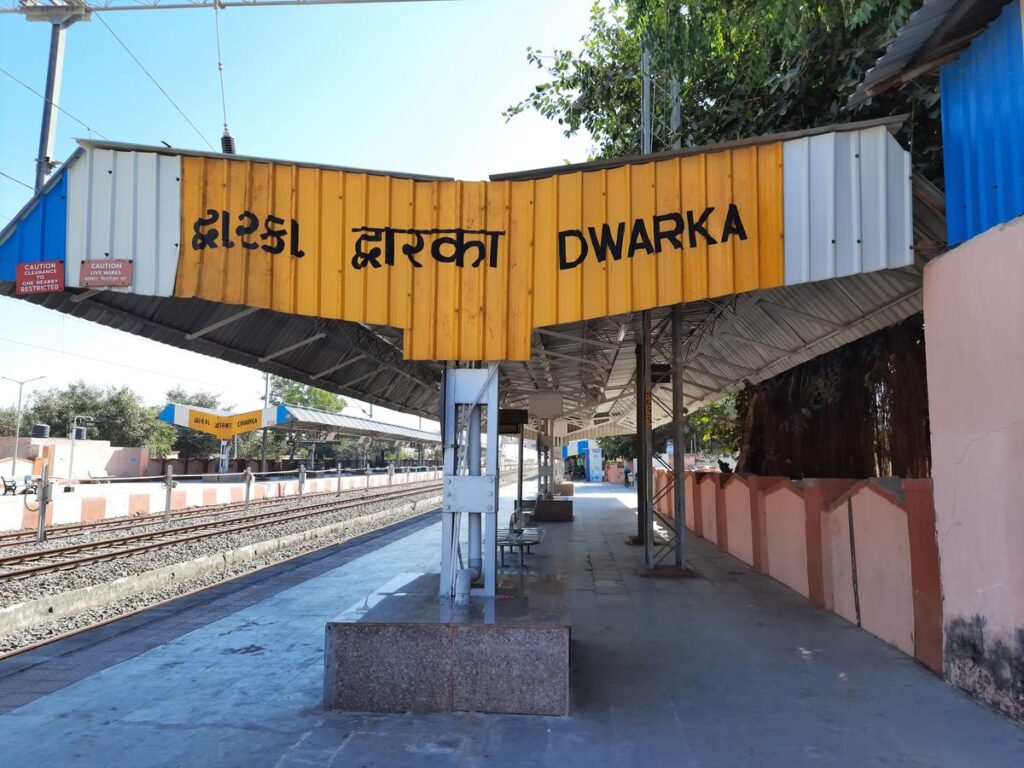
By Air
The nearest airport to Dwarka is Jamnagar Airport, located around 137 kilometers away. It has regular flights to and from cities like Ahmedabad, Mumbai, and Delhi. From Jamnagar, travelers can hire a taxi or catch a bus to Dwarka, which usually takes about three hours.
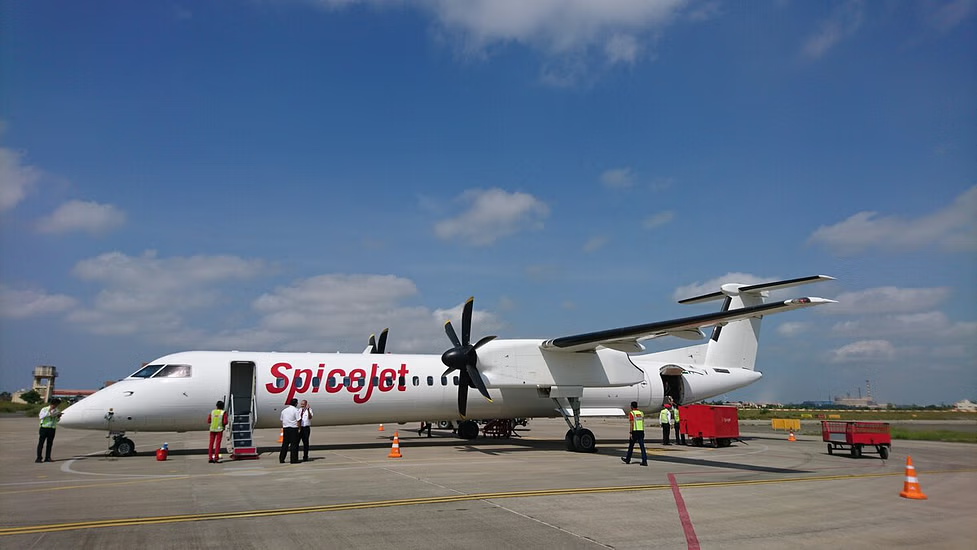
Best Time to Visit Dwarka
Planning your trip to Dwarka becomes even more memorable when you choose the right season. As a coastal city in Gujarat, Dwarka experiences a mix of hot summers, refreshing monsoons, and pleasant winters. Each season offers a unique charm, but some months are more comfortable for travel and temple visits.
Winter: October to February
The winter season is the most popular time to visit Dwarka. With temperatures ranging between 10°C and 25°C, the weather remains pleasant and cool, making it perfect for sightseeing and temple rituals. This period also coincides with festivals like Diwali and Makar Sankranti, when the temple and the city glow with celebrations. Pilgrims often find the spiritual experience more enjoyable in the crisp winter air.
Summer: March to June
Summers in Dwarka can be quite hot, with temperatures soaring above 35°C. While temple visits continue throughout the year, exploring the city during the day may feel exhausting. However, early morning and evening darshans still draw a steady flow of devotees. Travelers who can handle the heat may find this season less crowded and more peaceful.
Monsoon: July to September
The arrival of the monsoon brings refreshing rains that cool the landscape. Dwarka receives moderate showers, and the sight of the Arabian Sea during this season is captivating. While heavy rain might cause some travel delays, many visitors enjoy the serene atmosphere and fewer crowds.
The Ideal Season
For most travelers, October to February is the best time to visit Dwarka. Comfortable weather, festive celebrations, and calm seas make this season truly special. Still, no matter when you choose to come, Dwarka’s spiritual aura and the presence of Lord Krishna ensure that every journey feels divine.
FAQs on Dwarka Travel Guide
1. What is Dwarka famous for?
Dwarka is famous as the kingdom of Lord Krishna and is one of the Char Dham pilgrimage sites in India. The Dwarkadhish Temple and nearby Bet Dwarka are the main attractions.
2. How many days are enough for a Dwarka trip?
Most visitors spend 2 to 3 days in Dwarka. This allows enough time to visit Dwarkadhish Temple, Bet Dwarka, Rukmini Devi Temple, Nageshwar Jyotirlinga, and Gomti Ghat.
3. What is the best time to visit Dwarka?
The best time is October to February, when the weather is cool and pleasant. Summers can be hot, and monsoons bring moderate rainfall.
4. How can I reach Dwarka?
Dwarka is well connected by road, rail, and air. The nearest airport is Jamnagar (137 km), Dwarka has its own railway station, and buses operate from major Gujarat cities like Ahmedabad, Rajkot, and Somnath.
5. What are the must-visit temples in Dwarka?
- Dwarkadhish Temple
- Rukmini Devi Temple
- Nageshwar Jyotirlinga
- Bet Dwarka temples
- Small shrines along Gomti Ghat
6. Can I visit Dwarka with family and children?
Yes, Dwarka is a family-friendly pilgrimage. The temples are accessible, and most places can be covered comfortably with children and elders.
7. What are the food options in Dwarka?
Being a pilgrimage town, most restaurants serve vegetarian food. You’ll find Gujarati thalis, temple prasad like khichdi, and local sweets.
8. Are hotels easily available in Dwarka?
Yes, Dwarka offers a range of accommodation, from budget lodges to mid-range hotels and dharamshalas near the temple. During festivals, booking in advance is recommended.
9. Is Dwarka part of the Char Dham Yatra?
Yes, Dwarka is the western seat of the Char Dham circuit, along with Badrinath (North), Puri (East), and Rameswaram (South).
10. What should I not miss in Dwarka besides temples?
- A boat ride to Bet Dwarka
- Evening aarti at Dwarkadhish Temple
- Sunset view at Gomti Ghat
- A visit to the Dwarka lighthouse for panoramic sea views

